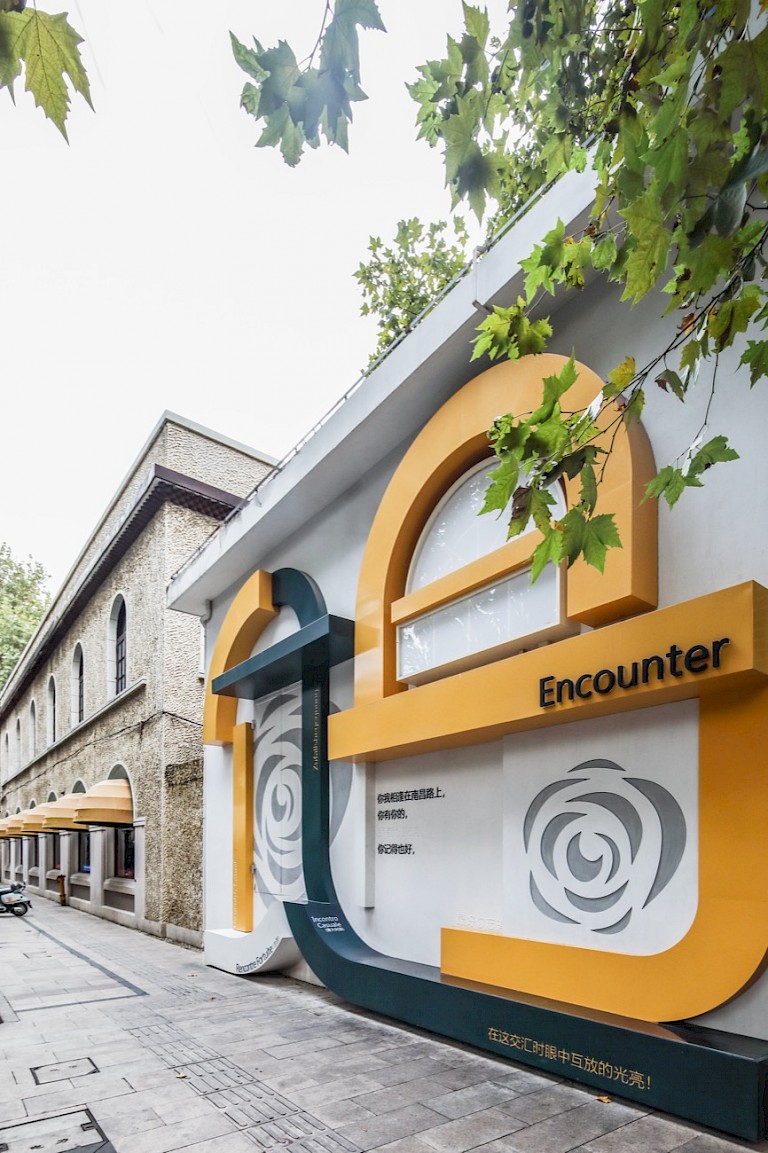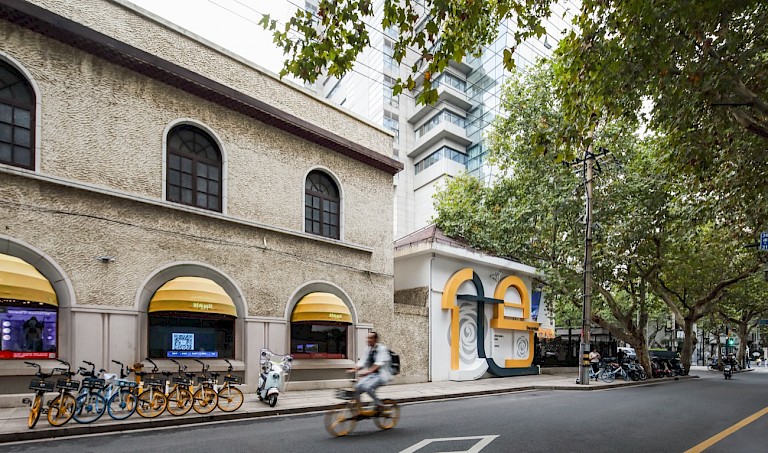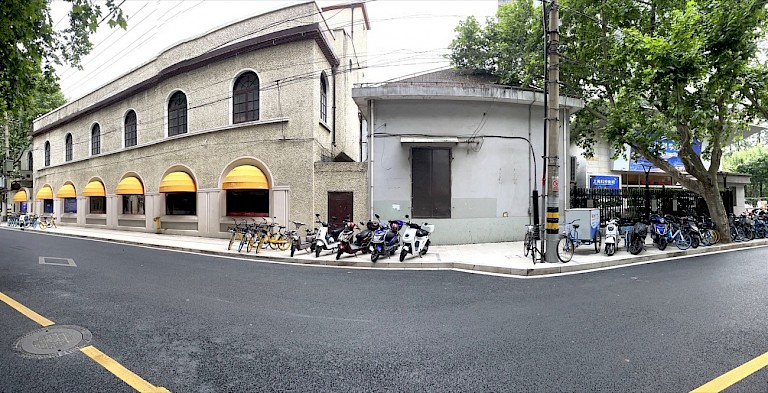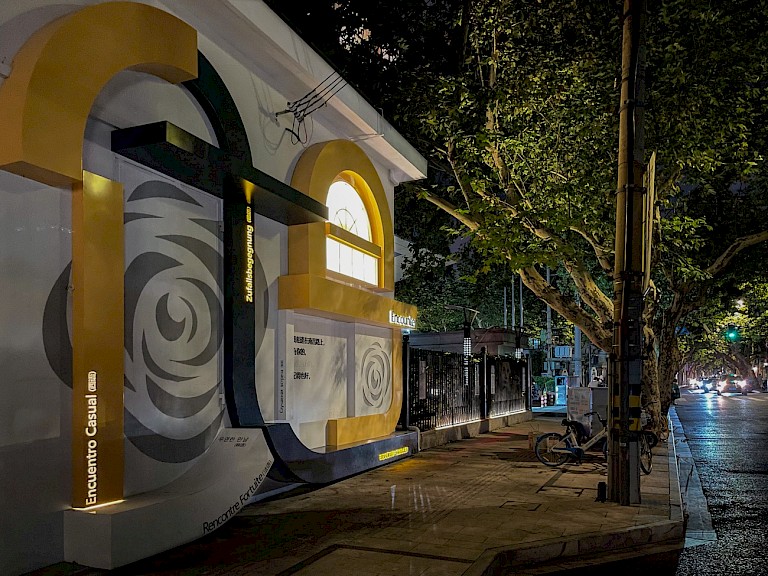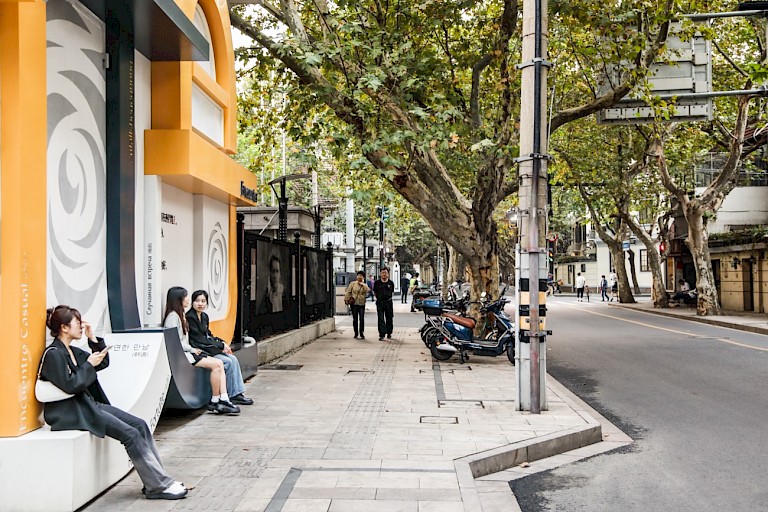



Planning and initiation of Encounter involved consultation and feedback from local residents of the The Nanchang Road historical neighbourhood and reserve.
The Department of Architecture of Shanghai Academy of Fine Arts contributed professional guidance, and student participation in the design and building of Encounter. Students also took part in field research, activity planning, guidance in construction, etc.
For design guidance and technical support in the implementation stage, Encounter also involved The Landscape Planning and Design Institute of Shanghai, Municipal Engineering Design Institute, and the Zhong Lyu Scene Space Shanghai Model Worker Programme.
Encounter is a part of the daily life of the residents, Nanchang Road has become a public art exhibition ground.
The "Art Acupuncture" approach enhances the environmental quality of the neighbourhood while enriching the visual experience for the public. Pedestrians encounter the artwork, and members of the community as they stroll along the street. In this way, Encounter offers an immersive aesthetic and social experience.
Encounter was selected for inclusion in exhibition "Beautiful Nanchang Road - neighbourhood Renewal Design Record." Through this, the designers and residents worked in close dialogue and practical projects. Residents took their learning from the projects into their own home construction and refurbishment. In addition, the residents developed an enhanced sense of community belonging and identity, while appreciating the beauty of their surroundings.
The involvement of architecture students from the Shanghai Academy of Fine Arts of Shanghai University has deepened their interest in community renewal and governance. The students will regularly volunteer in the "urban art micro-space" every week, participating in renewal projects, building links with the community and enterprises, influencing and educating the community in aesthetics and arts.
Nanchang Road is a neighbourhood that now features specialty cafes, developing a reputation as a place filled with coffee shops, florists, book shops, and other outlets with cultural and creative offerings. A series of activities have sprung up around Encounter called "Encounter Coffee." The substation, as part of the "art acupuncture" approach is contributing to the cultural and economic development of the neighbourhood.
Painting exhibitions for children are now being held on Nanchang Road, with study activities for young people centred on the theme of "Encounter." This is an example of the increasing continuous use of the street space and the interactions it fosters.
Shanghai Academy of Fine Arts makes interventions in the neighbourhood through the "art acupuncture" approach. Public art leads the way with micro-infrastructure renewal, with art exhibitions, aesthetic education activities, and university teaching. This serves as multi-position research, creation, and teaching modes, fostering cooperation between the university and the local community.
The government coordinates the space of the neighbourhood, wit teachers and students of the university professionally taking the lead; sorting out and integrating cultural resources of the Nanchang Road neighbourhood. This is part of the full consideration of the the development needs of the street, and the requirements of the residents.
Regular art workshops and initiatives, community cultivation, design competitions, and other kinds of public cultural activities promote the formation of a sustainable art ecosystem, and a practical path toward neighbourhood renewal and thriving.
